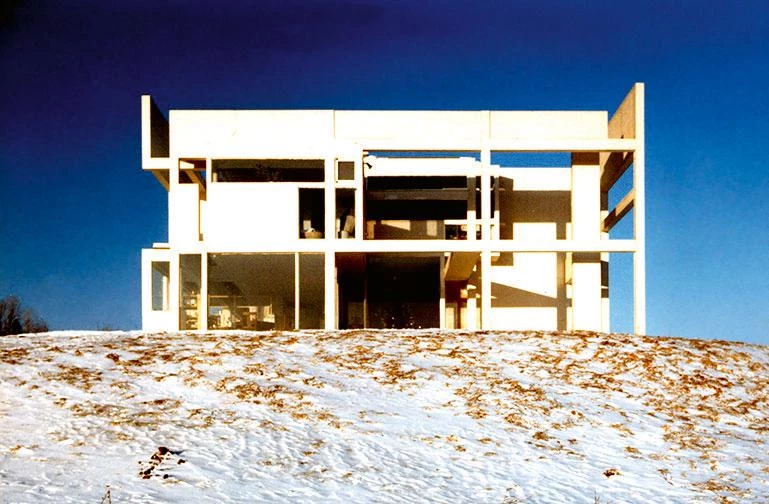
Casa II, Hardwick, Vermont, EE.UU. (1969-1970) © Eisenman Architects
Born into a well-off family of non-practicing Jews, young Peter only became conscious of his origins when the upheaval of the United States’ entry into the war stoked the flames of antisemitism. With both sides of the family coming from the eastern and western edges of Germany, a country that exercised an indisputable scientific leadership in the early 20th century, his father was an organic chemist, which influenced Peter to begin a degree in chemistry at Cornell University. After just a year of study, his love of drawing and the recommendations of an advisor led him to architecture, a degree he would later pursue at Columbia University, where the strict demands in terms of time and dedication proved incompatible with swimming, a sport he had practiced with the intensity of an elite athlete since the age of seven. In 1960 he moved to Europe on a Fulbright grant, participated in his first architecture competition, and started teaching at Cambridge University. Three years later, he defended his doctoral dissertation there, under the direction of Leslie Martin, focusing on ‘The Formal Basis of Modern Architecture’ as his topic. During that period, he also met the first of his great mentors, the British critic Colin Rowe, who, over the course of two long summer trips to Italy, awakened in the young American a fascination for Renaissance and Baroque architecture... [+]






